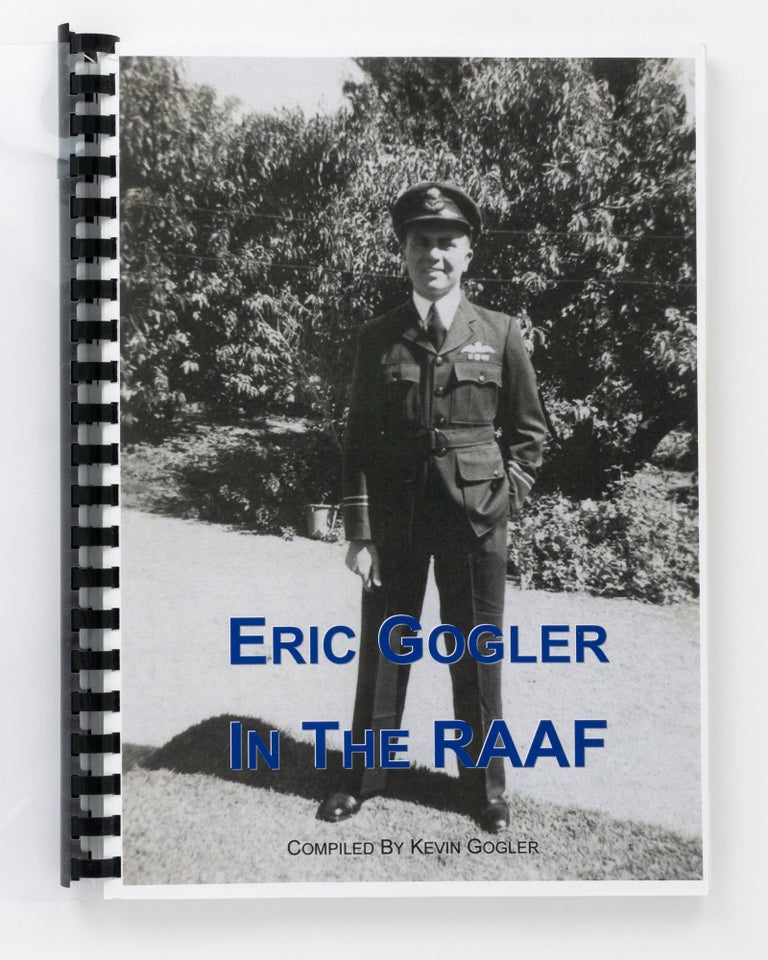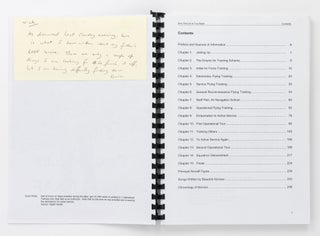Eric Gogler in the RAAF
[Hawthorndene, The Author], 2007 ('Version 4, 11 June 2007' appears at the foot of the last page).
Foolscap folio, 250 pages with numerous illustrations (the majority from photographs).
Plastic comb-bound spine with transparent plastic covers; second-last leaf detached and creased; an excellent copy.
The biography of a WW2 RAAF veteran from South Australia, compiled by his son. Some related ephemera are loosely inserted, including a hand-written note from Kevin Gogler, forwarding this copy: 'There are only a couple of things I am looking for to finish it off, but I am having difficulty finding them'. Trove lists a 2009 'revised and updated edition', and a 2020 edition (both with the subtitle 'One Pilot's War in Australia and New Guinea', but these appear to be very limited-edition digital printings (as is this 2007 version). Kevin Gogler also produced 'We Never Disappoint. A History of No. 7 Squadron RAAF, 1940-1945' (2012). A short account of the squadron will serve as an introduction to the biography: 'During World War II, No. 7 Squadron was re-formed at RAAF Station Laverton, Victoria, on 27 June 1940. It was originally intended to equip the squadron with Lockheed Hudson aircraft, but the unit was reduced to cadre status. The squadron was re-formed in January 1942 as a Hudson operational training unit responsible for preparing aircrew for posting to other squadrons. Commanded by John Balmer, the squadron undertook several convoy escort flights and anti-submarine patrols along the Australian eastern seaboard. In early June, one of the squadron's aircraft located and attacked a Japanese submarine, possibly damaging it. Shortly afterwards, the majority of the squadron was absorbed into No. 1 Operational Training Unit. In August 1942, what remained of the squadron moved to Nowra, New South Wales, where it was re-equipped with DAP Beaufort medium bombers and began training to operate in the bomber-reconnaissance role. The squadron completed its training in October and moved to Ross River near Townsville, Queensland, where it undertook convoy escort patrols over Australia's northern waters. During these operations, the squadron's aircraft damaged another Japanese submarine, shot down two Japanese Aichi E13A "Jake" seaplanes and damaged several others. The squadron was based at Horn Island, Queensland, from April to October 1944, when it moved to Tadji, Papua New Guinea. From November 1944 until the end of the war, the squadron flew strike missions against Japanese positions in New Guinea in support of the Australian 6th Division. The squadron also participated in rescue operations for aircrew that came down behind Japanese lines. No. 7 Squadron was disbanded at Tadji on 19 December 1945. During the war, 33 personnel from the squadron were killed in action or died on active service' (Wikipedia).
Item #128006
Sold


